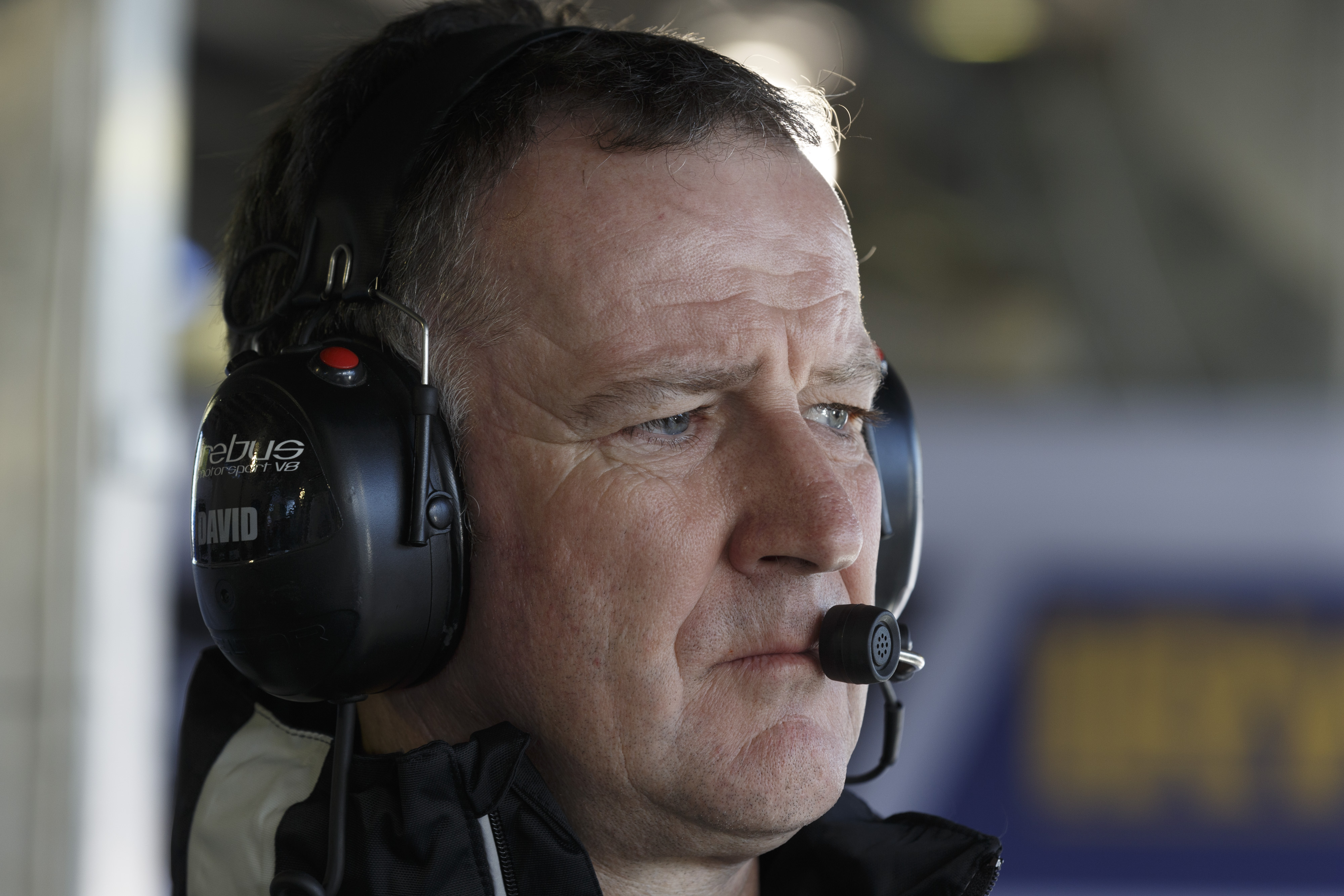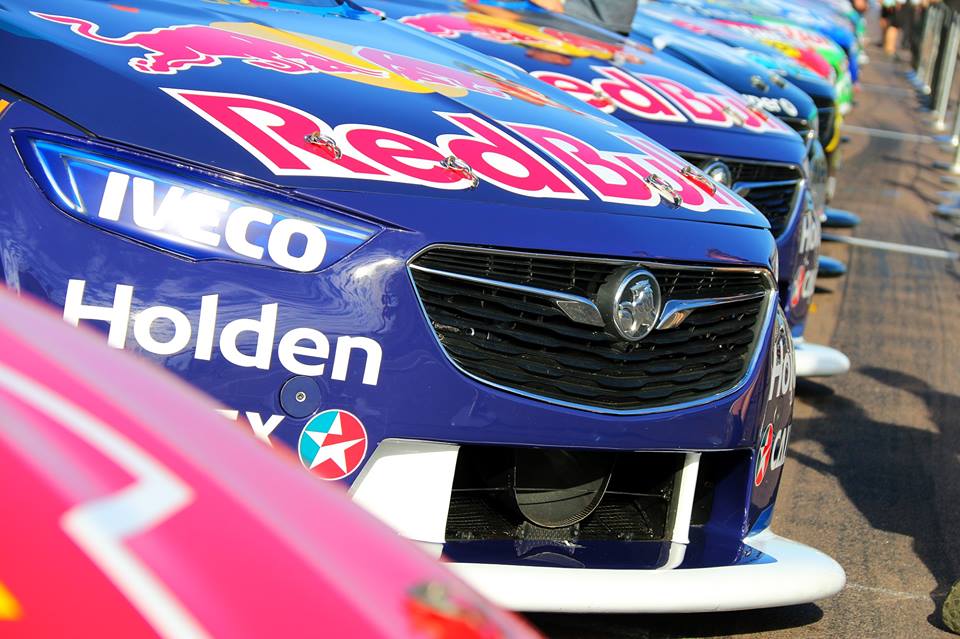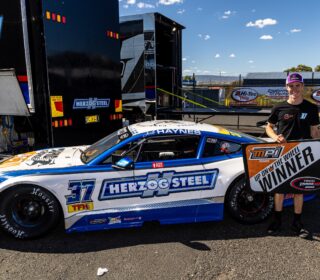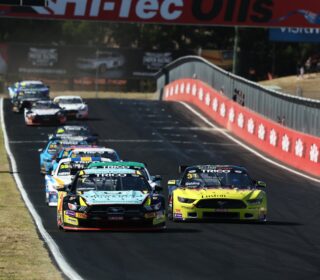PREPPING THE PATH FOR THE SUPERCAR MUSTANG

Preparing the path for the Ford Mustang is all in a day’s work for Supercars Technical chief.
ONE of the most contentious subjects in Supercars is the parity of the different makes that contest the Virgin Australia Supercars Championship.
While often criticised by teams and fans alike, the record books show that the process undertaken to ensure a level playing field is not only fair but very well designed.
As soon as a new model or make of Supercar rolls out of the Pit Lane at the Adelaide 500, so the arguments begin. Over many years the Supercars Technical Department, under the watchful eye of David Stuart, has conducted testing on new cars such as the Volvo S60 or the model upgrades of various Ford Falcons and Holden Commodores.
Stuart has held the position of Sporting and Technical Director at Supercars since 2014.
This four-year period has seen aero testing and homologation on the widest range of sedan body shapes since Supercars’ inception in 1996.

The Nissan Altima, Volvo S60, a large overhaul for the Falcon FGX and now the first hatchback, the ZB Holden Commodore, have all been homologated under Stuart’s watchful eye. But the next phase will be one of the most closely followed programs Stuart and his team have ever undertaken thanks to the arrival of the Ford Mustang GT – the first two door coupe to run under the current Gen 2 COTF regulations.
The Race Torque raised the aero issue across a range of motorsport categories in an article back in September 2017, however the project at hand now is not so much the argument of aero versus mechanical grip but is now a focus on ensuring parity in Supercars.
Dave Stuart spoke to The Race Torque to de mystify some of the conspiracy theories and explain in layman’s terms just how his Technical Department will approach the Ford Mustang ahead of its debut in 2019.
“The first thing to understand is that all the cars that have been adapted to the chassis have been modified in some way, whether they have been lengthened, shortened, narrowed or made wider. The second thing is we are adapting the outer body skin to the car. So a lot of the inner body panels are used but trimmed significantly,” Stuart explained in setting the basic Gen 2 ground rules.

“The first process is the Homologation team spending considerable time looking at how they can adapt the body to the car whilst maintaining the manufacturer’s DNA.”
To put that in context of the Ford Mustang, Stuart noted some of the key factors in the homologation process of the two-door entrant.
“With a two door coupe you see very sleek lines, usually a low roof height, and rear wheel tubs to the top of the guard height. We (Supercars) spent some time about 18 months ago looking at four coupes, one of them being the Mustang. We looked at how we could make it fit the chassis which we were able to do. Now of course, we don’t have the blessing or the sign off from a manufacturer to do that, so DJR Team Penske as the homologation team, will work closely with Ford to now ensure that the car fits the chassis correctly, retains the DNA, and is compliant with the rules.
“Now that it is a real live project, we meet with the homologation team on a fortnightly scheduled meeting, subject to the Supercars event calendar, where we work through any issue that may come up during the process.” Stuart explained.
Once this gestation period is complete, a real Mustang Supercar will sit on the ground at DJR Team Penske’s workshop.
However, it is only part the way there of becoming a homologated car for the Championship. Aero testing is the stage which brings the Mustang for the first time side by side with the ZB Holden Commodore and most likely the Nissan Altima.

It is likely that DJR Team Penske, Tickford and Ford Performance will decide on a number of aero kits for the back to back test. Supercars do not stipulate how many is likely to suffice the testing program, but expects the teams to cover as many bases as possible.
“We advise the teams to bring enough tools in their arsenal to ensure that that vehicle matches the incumbents with a goal of fitting inside the aero parity ‘box’. They will narrow that down through CFD programs and both of us will have performed substantial work in that design area. I must reiterate that we do not tell the team what they can and cannot bring (to the test) but we do enforce what we believe will be acceptable under the rules.” Stuart outlined.
The aero test will not only be a measurement of the Ford Mustang.
The homologation teams for the ZB Commodore (Red Bull HRT) and the Nissan Altima (Kelly Racing) also have the opportunity to submit upgrades to their existing aero packages as part of this testing process.
Stuart pointed out that as it is almost certain that every current Ford team will switch to the Mustang, it is unlikely that a Ford Falcon FG X would be invited.
Supercar teams introducing new models have always had to perform in short time frames and the 2019 homologation of the Mustang is no exception.

“Traditionally the homologation test was conducted in January of the year of competition but for the ZB Commodore we moved that back to December and again, looking at the calendar, we are aiming for the sign off on the Ford Mustang aero kits in December 2018. That then allows enough time to produce the kits for all the Ford teams before we start testing in February.” Stuart concluded.
One thing is certain however, the hysteria that greeted the ZB Commodore in Adelaide as the new ‘weapon’ was quickly dispelled with Scott McLaughlin taking emphatic wins for DJR Team Penske at Phillip Island and Barbagallo, the Nissan Altima of Rick Kelly coming on song at Phillip Island, and backing it up with a win at Winton and the ZB taking further wins in the hands of Erebus’ David Reynolds in Darwin.
The politics, the battles and no doubt the squabbles will all re-surface at the 2019 Adelaide 500 but Dave Stuart and his hard working Technical Team at Supercars can rest easy that their process is sound and the parity it achieves delivers the closest most competitive Touring Car Racing in the world.
WORDS: Dale Rodgers
COVER IMAGE: Mark Horsburgh / Supercars
DETAIL SHOTS: Mark Walker
RENDER: SS MEDIA / www.ssmedia.com.au







